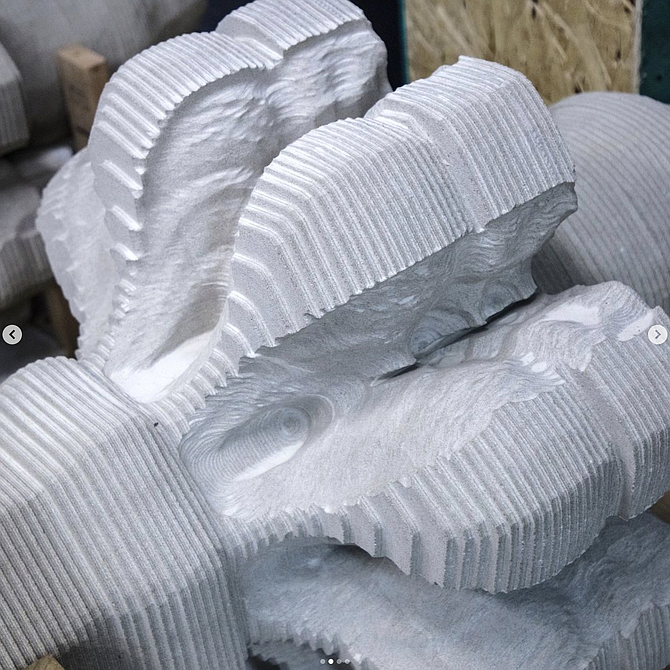Easy Stone Center on Mill Street NE in Vienna, Virginia, commonly uses CNC (computer numerically controlled) stone-cutting machines or software-programmed robots to cut, shape, and intricately carve stone fireplace hearths, surrounds, mantles, and other products from blocks of limestone, sandstone, marble, and granite. All products are custom-made to dimensions, according to business owner Chris DeCarlo of DeCarlo Enterprises, Inc., trading as Easy Stone Center.
"The company's been in business for 18 years. and it cuts stone for anything from hearths to intricate designs. We've also cut stone for the U.S. Capitol when they were doing their restoration work," he said.
Recently, Easy Stone Center received an architectural fabrication request for a private building in the District of Columbia listed on the National Register of Historic Places of the United States Department of Interior. Erected "for a thousand-year design life," construction began in 1907 when the building’s foundation stone was laid during a ceremony that included an address by President Theodore Roosevelt, according to its NRHP inventory-nomination form, entry date 1974.
That building is the Washington National Cathedral, officially named the Cathedral Church of St. Peter and St. Paul — designed in the 14th-century Gothic style. It claims the status of the highest spot in Washington, D.C., given that its 300-foot tower sits on a hill 400 feet above sea level.
During a rare earthquake that occurred in the mid-Atlantic region on Aug. 23, 2011, three fleur-de-lys-shaped corner spires broke off and fell from their pinnacles.
Now, approximately 11-and-a-half-years after the earthquake, the time has arrived to cut the replacement spires. The stoneworkers at Easy Stone Center, under the direction of Mike Kennedy, have the tools, reputation, and expertise to complete the task.
Easy Stone Center owns and operates a powerful Breton shapemill, said DeCarlo. It is designed to machine into tough stone that requires high power and torque and operates with large workpieces. For example, DeCarlo said, "The company buys quarry blocks that weigh 20 tons ... They might measure 10 x 4 x 5 feet. They are cut with a block saw, which has an 11-foot-6-inch diameter.”
The cathedral is made of limestone blocks. Under Kennedy's hands, the software suite allows control of the machining center through 3D CAD/CAM programming of complex stone components. The 5-axis machining center is perfect for cutting, shaping, block slotting, turning, and milling, giving statues and columns complicated, intricate, and exact shapes for restoration work.
The Washington National Cathedral posted on Instagram at Washington National Cathedral (@WNCathedral) that even though the cathedral is entirely hand-crafted, “sometimes they get a little help from robots.”
"As we seek the remaining $14 million to finally complete the repairs from the 2011 earthquake, a robotic carving drill in nearby Vienna, Va., is helping to shave some time and money from the project. The giant drill at Easy Stone Center takes a computerized rendering of the carved pinnacles and finials and rough-cuts the Indiana limestone to about 80 percent finished.”
According to the post, “The giant stones will be transported to the cathedral, where their stone carvers will finish the detail work by hand. They will use centuries-old techniques and tools. When the stones are finished, they’ll eventually go to the top of the cathedral’s central tower to replace giant pinnacles that were damaged in the earthquake.”
The Washington Cathedral continues to fundraise for repairs. The overall target is to raise $150 million. Visit their website for more information.
